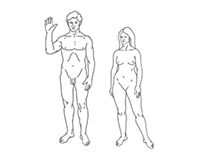Piphilology [pahy-fi-lol-uh-jee] comprises the creation and use of mnemonic techniques to remember a span of digits of the mathematical constant π. The word is a play on the word ‘pi’ itself and of the linguistic field of philology (the study of written language).
There are many ways to memorize π, including the use of piems (a portmanteau, formed by combining pi and poem), which are poems that represent π in a way such that the length of each word (in letters) represents a digit.
Here is an example of a piem: ‘How I need a drink, alcoholic of course, after the heavy lectures involving quantum mechanics.’ Notice how the first word has three letters, the second word has one, the third has four, the fourth has one, the fifth has five, and so on. In longer examples, 10-letter words are used to represent the digit zero, and this rule is extended to handle repeated digits in so-called Pilish writing. The ‘Cadaeic Cadenza’ records the first 3,834 digits of π in this manner, and a 10,000-word novel, ‘Not A Wake,’ has now been written accordingly.
However, piems prove to be inefficient for large memorizations of pi. Other methods include remembering patterns in the numbers (for instance, the year 1971 appears in the first fifty digits of pi) and the method of loci (used to memorize π to 65,536 digits). Until the 20th century, the number of digits of pi which mathematicians have had the stamina to calculate by hand remained in the hundreds, so that memorization of all known digits at the time was possible. In 1949 a computer was used to calculate π to 2000 places, presenting one of the earliest opportunities for a more difficult challenge. Later computers calculated pi to extraordinary numbers of digits (into the trillions), and people began memorizing more and more of the output. The world record for the number of digits memorized has exploded since the mid-1900s, and it stood at 100,000 as of 2006.
The Daily Omnivore
Everything is Interesting



Leave a comment